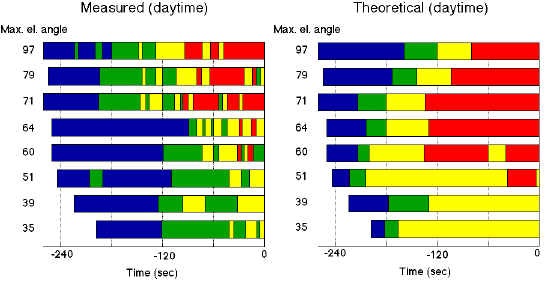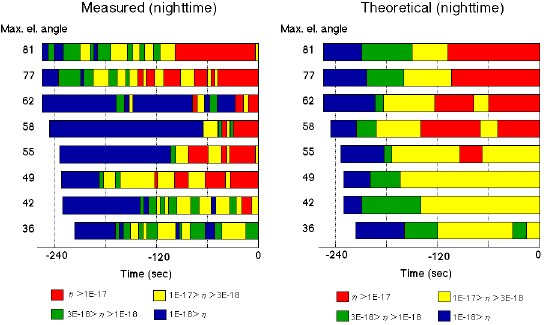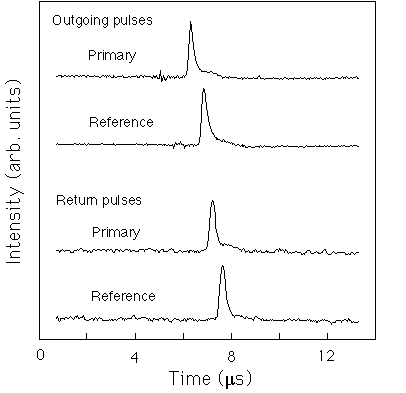5. Results - Optical characteristics of the RIS
Efficiency of the reflection of RIS at 532 nm was evaluated from the intensity of the image taken by the guide telescope ICCD. The absolute intensity was estimated by comparing the recorded image of RIS with those of stars. The return from the RIS is comparable to stellar magnitude of 2 to 3 depending on the elevation angle when lit by a 0.3 W laser with a beam divergence of 0.3 mrad. Figure 5-1 shows measured and theoretical efficiency of reflection of RIS for different paths, which were taken during the checkout period. Though the measured efficiency was sometimes affected by tracking error and atmospheric conditions, the maximum efficiency for each path agreed well with the theory.


Fig. 5-1 Measured and theoretical efficiency of reflection of RIS.
Figure 5-2 shows an example of the transmitted and received TEA CO2 laser pulses. The pulse shapes of transmitted and received pulses of two CO2 lasers are recorded every shot. Repetition rate of the TEA lasers is 50 Hz, and time interval between pulses from the two lasers is 200 microsec. The pulse energy was approximately100 mJ. The record for a piar of shots is shown in Fig. 5-2. Infrared return from RIS at 10 microns was evaluated by comparing the return from a retroreflector installed on a tower located 4.2 km from the ground station. By scaling the optical parameters and electrical parameters they agreed very well.

Fig. 5-2 Example of transmitted and received TEA CO2 laser pulses.
6. Results - Spectrum Measurement with the RIS
7. Results - Orbital Determination of ADEOS by laser ranging to the RIS
8. Future perspective
9. Publications
1. Outline of the RIS Experiment
2. The RIS on the ADEOS
3. Ground system for the RIS experiment
4. Results - Active tracking using image of the RIS
Return to RIS home page